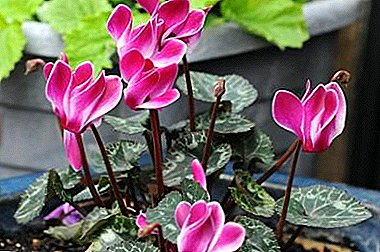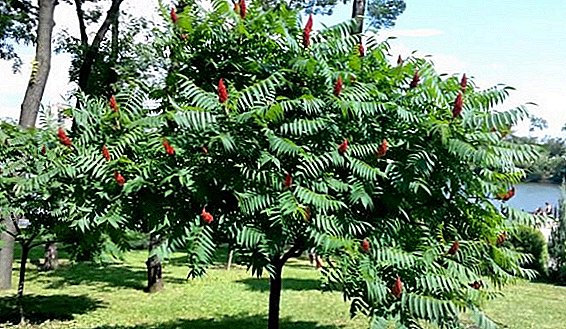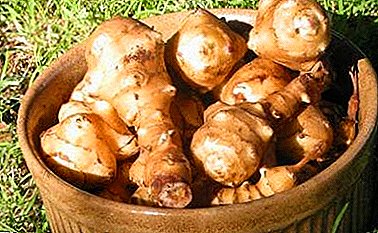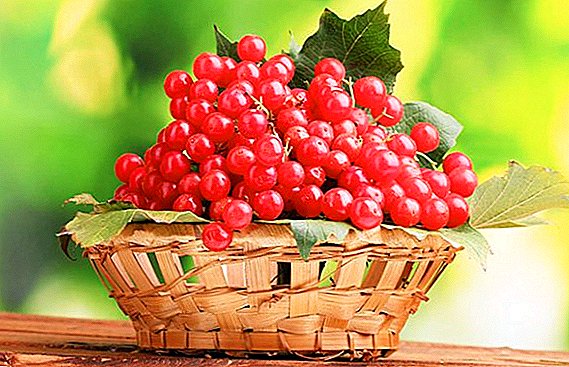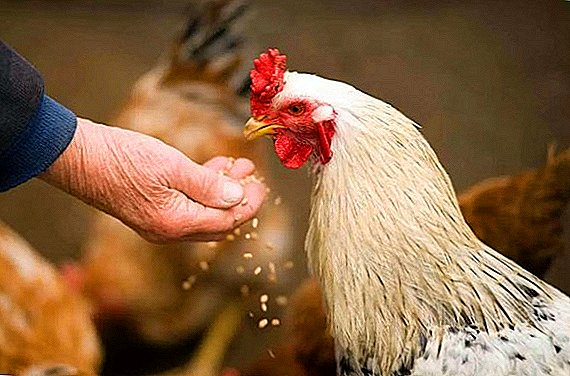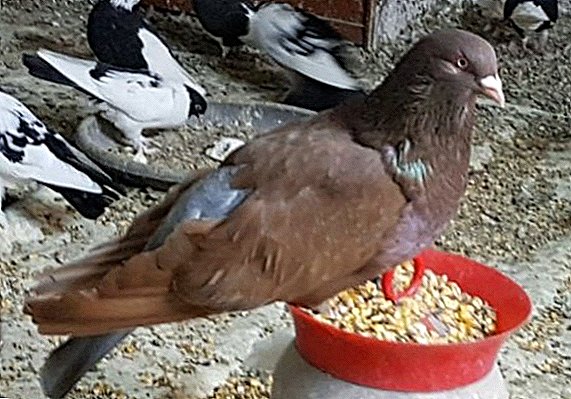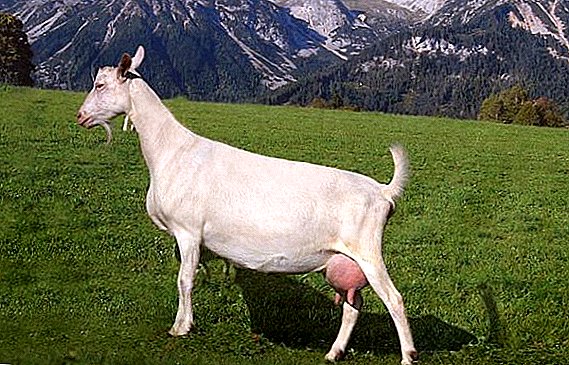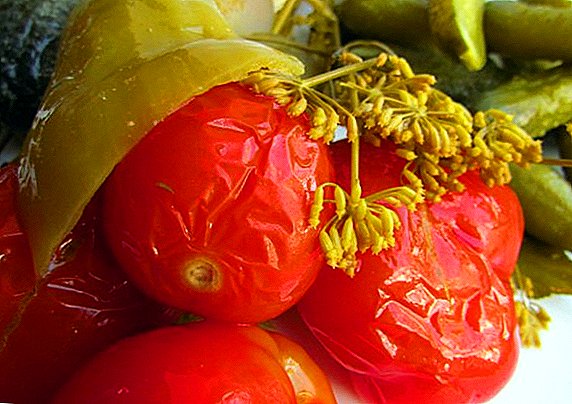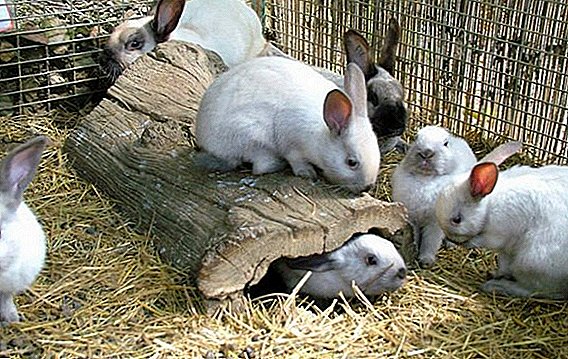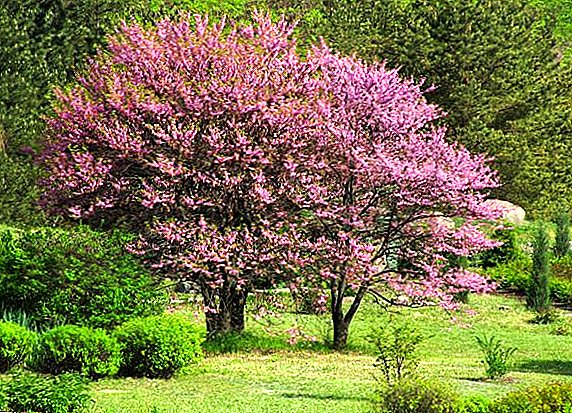 Tsertsis (Judah tree, purple) - an unusually beautiful tree shrub of the legume family, which is common in North America, China, the western and eastern Mediterranean. It was thanks to his large, bright colors that he gained the location of flower growers.
Tsertsis (Judah tree, purple) - an unusually beautiful tree shrub of the legume family, which is common in North America, China, the western and eastern Mediterranean. It was thanks to his large, bright colors that he gained the location of flower growers.
Growing cercis in the middle lane has a number of features.
Did you know? It is on the Judean tree, according to an ancient legend, that the biblical Judas hanged himself, which is why it is so called.
Cercis: a brief description of the plant
Cercis can reach a height of up to 18-20 m. A perennial plant, lives up to 70 years. On the trunk and large shoots of the bark has a brown-black color with cracks. Young branches - gray or brown-olive color. Annual shoots are smooth to the touch, reddish hues.
The foliage is egg-shaped, characterized by veins with a relief structure and smooth edges. On the branches they are fixed with scapes, spirally, alternately. The leaves are light green, but closer to the summer darken a little.  Before the leaves appear at their base and in the cortex, buds of pink color appear, from which the inflorescences develop. Cercis blooms for about 30 days, until the foliage fully opens. Flowers are grouped in brushes or bunches, they do not have the correct form.
Before the leaves appear at their base and in the cortex, buds of pink color appear, from which the inflorescences develop. Cercis blooms for about 30 days, until the foliage fully opens. Flowers are grouped in brushes or bunches, they do not have the correct form.
Did you know? The floral corolla of the certis resembles a moth, and the calyx resembles a bell.Five purple or pink petals, no more than 10 stamens and one ovary make up the flower of the plant.
After the culture has blossomed, pods form on the shrub (length - up to 10 cm), each of which contains up to 5-7 beans. They are flat, oval-shaped, with a glossy shine.
Site selection and soil for cercis
It is quite simple to create good conditions for growing cercis.
Despite the fact that the best option for placing purple is light partial shade, he is able to adapt to the bright sun. Additional lighting will be especially useful to the culture in the cold season.
The main requirements of cercis to the ground - good drainage, friability and the presence of lime. But the plant can grow on most soils in the middle zone. Only with very clayey soil you can add a little sand, thus improving drainage. 
Growing Cercis from Seeds
When growing tsertsisa you can apply the seed method of reproduction.
Since the beans are covered with a sufficiently hard shell and it is difficult to pierce the sprout, first the seeds are scalded, kept for 30 minutes in a weak solution of sulfuric acid or scarified (damage the surface of the bean with a needle, sandpaper, rubbed with sand, etc.).
Before winter, the fruits are sown in the garden to a depth of several centimeters, covered with lapnik branches, peat or fallen leaves to insulate.
Important! Thermophilic varieties of culture will sprout in the event that in winter it will not be colder than 3 ° C.You can also first sow the seeds in a container, place it in the basement or greenhouse for the winter, periodically spray with water. With the retreat of the frosts sprouts can be transplanted to a permanent place.
The first few years, seedlings grow in the garden slowly, and in the first year of life the upper part will die. New shoots that appeared in the spring, will also die. Only in the third year the branches will get stronger and reach up to 20 cm in height.
After the development of the root system will begin to actively grow skeletal branches.
Did you know? Since the culture is characterized by slow growth, it can be grown in a pot as bonsai.
Reproduction of certsis cuttings
 A sturdy sprout of a 2-3 year old purple one needs to be cut in the fall so that it has several healthy buds left.
A sturdy sprout of a 2-3 year old purple one needs to be cut in the fall so that it has several healthy buds left.
Stalk does not need to handle. It is immediately dropped in a new place. Cercis with such a landing is placed at an angle at a depth of 12-15 cm.
Even before the onset of cold weather, the plant has time to take root. Therefore, even if the ground part freezes, the rhizome will eventually give another sprout.
How to care for certsis
Judah tree does not need special care, but you need to remember that:
- although the culture can withstand drought, it is still worth watering it on hot summer days (several buckets of water per plant);
- in the spring (best of all in May) the plant should be fertilized with organic fertilizer (for example, dilute 1-1.5 cups of slurry in a bucket of water and place it under a bush).
Crimping Crimson
In the fall, purple is formed by trimming:
- remove shoots 1/3 of the length if necessary;
- cut branches that grow in the wrong direction;
- take unnecessary basal shoots.
Important! Formation is carried out only on the 4-5th year of the plant life, then it does not need this procedure.Frosted shoots are removed in the spring when sanitary pruning certsis.

Prevention and protection against diseases and pests
Cercis is extremely rarely affected by diseases and pests.
Only occasionally can a shrub attack aphid. It is removed with the appropriate chemicals (for example, Konfidor, Aktara, Karate, Fas), processing according to the instructions. This method of control is more effective for young plants. In adult specimens, affected branches are most often simply cut off.
Cracks on the shoots and trunk may appear from the strong and prolonged frost. To avoid this, you need to properly prepare the plant for the winter.
Wintering Cercis
Young purple, or Judah tree, in climatic conditions of middle latitudes requires shelter for the winter.
Before wintering, the branches of the shrub are neatly tied together; the plant is covered with burlap or spandbond in several layers, including the base of the trunk; the shelter is fixed. Take him with the arrival of winter. The soil under the plant can be mulled sawdust, foliage, peat.
Use in garden design
Judah tree when used in garden design retains a decorative look all year round. In the spring, gardeners can enjoy lush flowering plants for a month, then foliage, and in winter pods with beans delight the eye.  A successful solution will be a single planting culture. So she gets enough light and nutrients from the soil to show itself in all its beauty. Cercis also looks great in compositions with coniferous shrubs (juniper, thuja, dwarf species of pine and spruce).
A successful solution will be a single planting culture. So she gets enough light and nutrients from the soil to show itself in all its beauty. Cercis also looks great in compositions with coniferous shrubs (juniper, thuja, dwarf species of pine and spruce).
If an alley is planted from purple, then a distance of at least 0.8-1.0 m should be left between the specimens. With further growth, they will not interfere with each other. The plant organically looks in gardens in east style.
The hedge of the Judah tree is distinguished by its density and attractive appearance, but we must remember that the plant grows slowly, and therefore it is necessary not to overdo it with curly pruning.
In general, cercis will not cause much trouble in growing and will become a real decoration of the garden. In all seasons, he will attract the views of the household, your guests and just passers-by.


